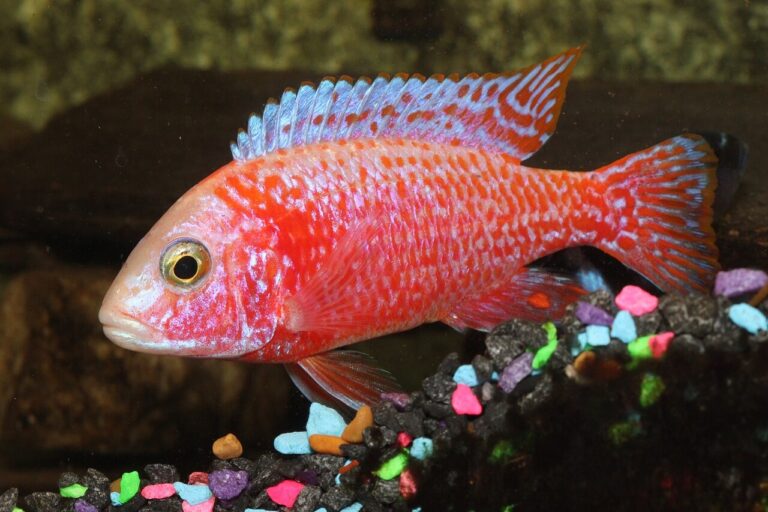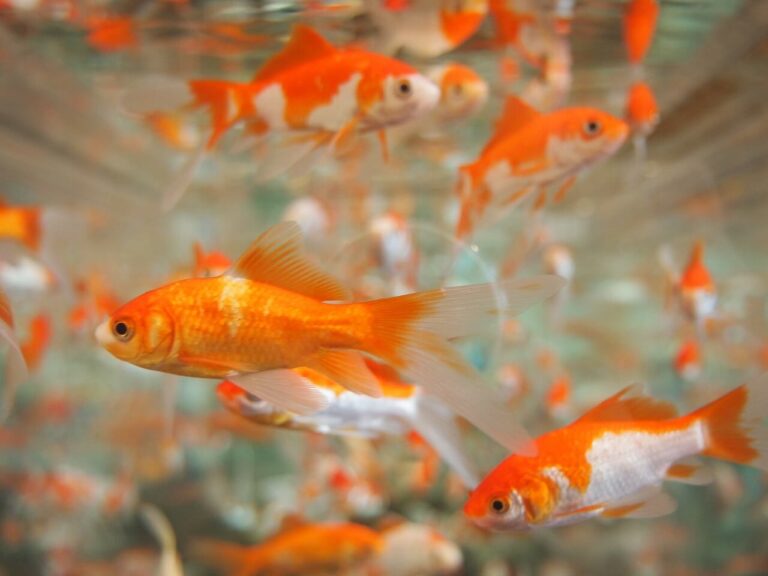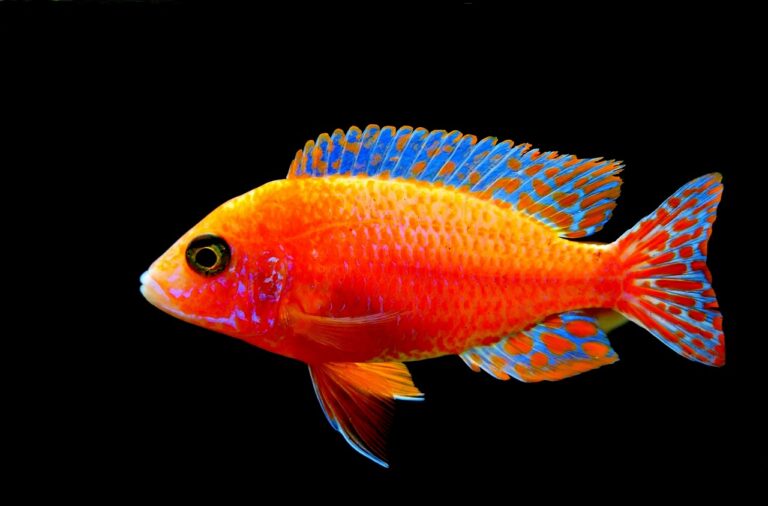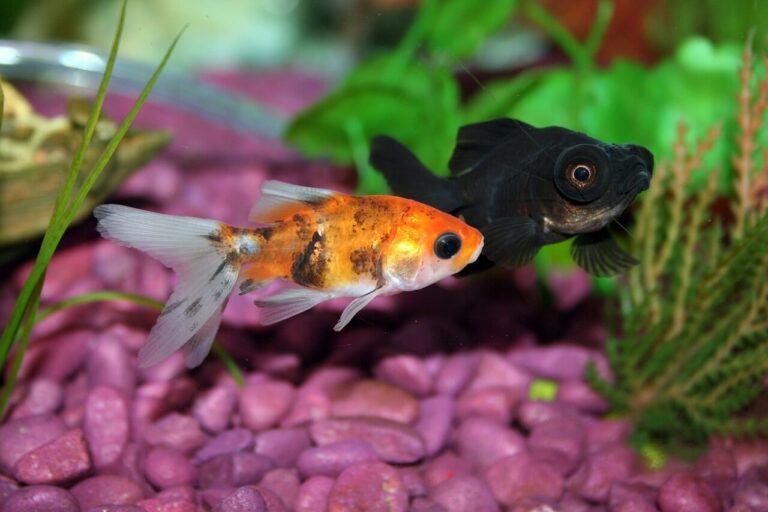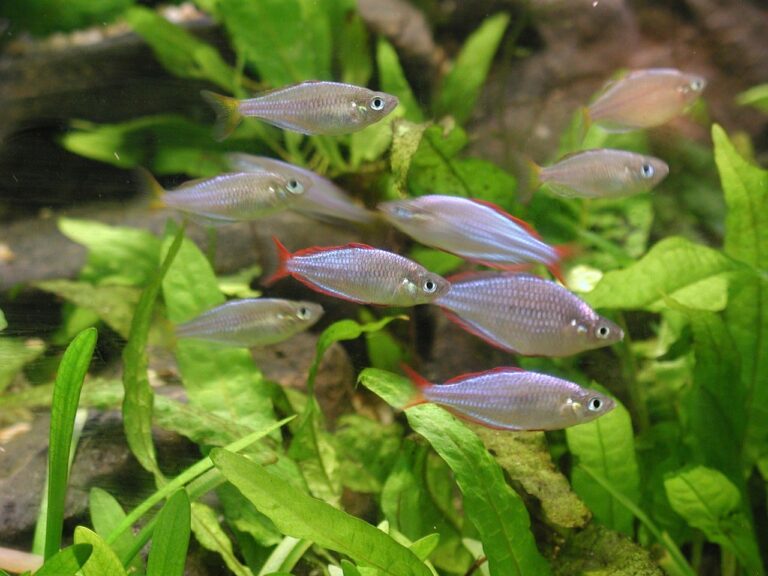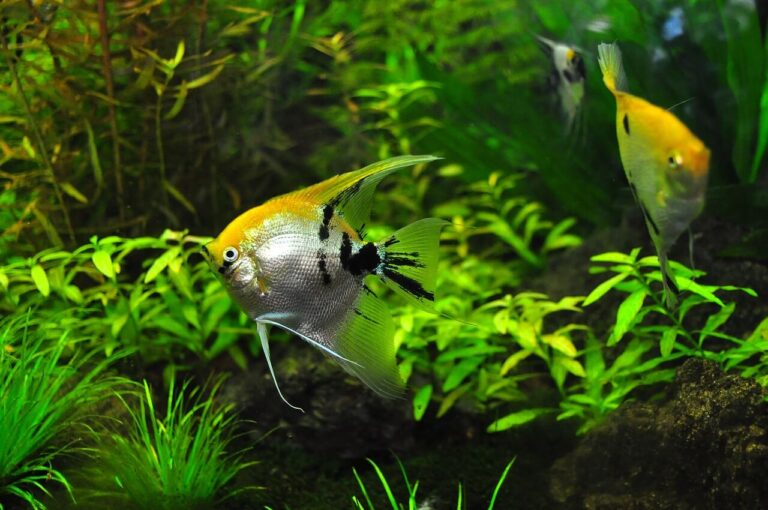9 Easy steps to setting up a freshwater aquarium.
Setting up a freshwater aquarium can be a fun and rewording hobby but there are some critical step you must take to ensure the health of your fish. There is nothing more enjoyable than sitting in front of a healthy aquarium and watching all the fish swim around. It can provide a sense of relaxation and satisfaction knowing that you helped create this. In this post we will go over the equipment and supplies need to start your aquarium and how to install and find the best fish for you tank. By following these guidelines you will be on your way to crystal clear, clean and healthy freshwater aquarium.
Setting up fresh water aquarium requires more than just a tank and water. There are several pieces of equipment and supplies that are needed to maintain a healthy environment for your fish.
Equipment and supplies needed for a freshwater aquarium
Aquarium Tank
Choosing the right aquarium tank for your fish is essential for their health, comfort, and wellbeing. The size and shape of the tank are important, as the wrong size can cause overcrowding or difficulty with oxygen levels.
Ultimately the size shape and and material of your tank will have a impact on your fishes help and your overall satisfaction with your fish aquarium.
There are many thing to consider when choosing a tank for the first time. The bigger the tank the easier it is to keep your water clear but it can be more work because there is more to clean, like gravel and the walls of the aquarium.
Tank Sizes

Fish tanks come in lots of different size, with each one being unique. The smallest tank like micro tank can start off smaller than a one gallon while some of the biggest tank are 100’s of gallons.
Tank shapes
Fish tanks come in all kinds of different shapes and sizes and the one want to choose will ultimately be up to you. For those looking to make an impact with their fish tank, shape is key. From the classic rectangular tanks to the hexagonal models, there are a wide variety of shapes available that will give your aquarium its desired aesthetic.
While more traditional tanks still carry a sense of timelessness, modern-style tanks tend be much larger and more attention grabbing – providing ample room for your fish to comfortably explore and making a statement in your home or office space. Ultimately, the right shape for you depends on personal preference and how it will compliment the style of your living environment.
How to choose your fish tank
Here are the steps to follow when choosing your fish tank that will best suite your needs.
Step 1: Determine the size that you will need
When choosing an aquarium, one of the key considerations is to determine the right size and capacity for the fish you wish to keep. Whether you are searching for one suitable for your home or office, there are a few important factors to take into account. Firstly, calculate the type and number of fish you plan to house. Secondly, ensure that you have enough space in your room that can accommodate both the tank and any additional furniture or décor that you want to place around it. As a general rule of thumb, allow at least 20 gallons of water per fish. This will help you increase the comfort factor and overall living space for your aquatic friends. Knowing these guidelines will help you choose a tank that meets your needs and those of your fish.
Step 2: Pick the shape of your tank
When it comes to selecting the shape of a tank, there are a few things to take into consideration. A wider but shallower tank may be the best choice for a fish that prefers to swim across its surface, while larger fish may reach their swimming potential in tanks with deeper sides. Placing decorations such as plants and rocks is also something to consider when picking the shape; tanks that provide more space near the edges can better accommodate these types of changes without affecting the natural flow of the water. By taking all of these factors into account before purchasing, aquarists can ensure that their fish have plenty of room and feel comfortable in their tanks.
Step 3: Determine what materials you want your tank to be made out of.
Choosing the right material for a tank is essential since it will affect everything from its durability to its cost. Glass tanks are generally the most popular option because they are strong and fairly cheap. However, there are several other materials to consider in addition to glass. For instance, acrylic tanks tend to be a bit more lightweight than glass tanks and also provide excellent clarity of view. Plastic and fiberglass tanks are usually far cheaper than either glass or acrylic, so if cost savings is a priority then these two options may be your best bet. Ultimately though, only you can decide which material best suits your needs; some people may opt for aesthetics while others may put greater emphasis on affordability or weight. Whichever you decide, make sure that it meets the requirements for both form and function!
Step 4: Pick you fish tank stand
When choosing a tank for your home, the stand is just as important as the tank itself. Make sure to pick a sturdy stand that can easily support the weight of the tank – remember, each gallon can weigh up to 10lbs! Furthermore, it is essential to choose a flat and stable surface to ensure the safety of both your fish and tank. To make maintenance easier, your tank should be close to a power outlet and water source. Additionally, make sure you place your aquarium in an area with no drafts and a stable temperature – this will help create favorable habitat conditions for your fishy friends.
Step 5: Research and compare different brands and models
When it comes to finding the perfect tank, research and comparison are key. With so many models and sizes to choose from, it can be overwhelming, but don’t let that discourage you! Make sure to compare different brands and models of tanks based on your needs; for instance, if you’re short on space, a corner or bowfront tank might better suit these conditions. Be sure to factor in the cost when making your decision as well – luckily there are tanks available in every budget. To narrow down the options even further and get an informed opinion, don’t hesitate to ask fellow aquarium hobbyists or staff at local fish stores for their experiences and advice. After all their input is taken into consideration, you’ll find it’s much easier to make an educated decision about which tank best fits your desired setup!
Filtration system
Keeping your aquarium water clean and healthy is essential for providing a safe and comfortable home for your fish. A good filtration system helps to ensure that impurities, uneaten food, and other waste products are filtered out of the water and doesn’t get recycled through the tank. From internal to external power filtration systems and even natural ones, there are a range of underlying beneficial functions that come with each type of filter. It’s important to understand each style of filter before selecting one. Internal filters are generally easier to install, while external filters provide you with more control over a variety of conditions such as additional filtering media or different types of mechanical straining surface area sizes.
Steps to finding the right filter for your aquarium
Here are the steps you should follow to find the right filter for your aquarium.
Determine the size and capacity of the filter you need.
When deciding which filtration system to buy, it’s essential to consider the size and capacity of your tank and the type and number of fish you plan to keep. You should always aim for a system that can turn over the volume of your tank at least once per hour. This is an important rule to follow as it will provide the optimum environment for your fish to thrive. It’s also crucial that you choose a solution that is designed with your specific fish species in mind, as requirements may differ considerably.
The different types of filtration systems available
There are three main types of filter available for a fish tank. They are; mechanical, biological, and chemical filtration. Each one has its own benefits and place within a filter system and no one is better than any other.
I have used all three and can say that each one has provided clear water with proper maintenance care.
For smaller aquariums and fish tanks, mechanical filtration is an efficient way to keep the water free of harmful solid particles. It uses filter media such as sponge or foam to absorb dirt and debris from the water, ensuring that the tank stays clean. For larger tanks, biological filtration can be used to convert harmful ammonia and nitrite into less dangerous nitrate, making it easier on your fish population. And finally, chemical filtration with activated carbon is great for removing impurities and odors from the water, resulting in a much cleaner environment for your aquatic friends.
Filter media
When it comes to selecting an appropriate filter medium for your filtration system, it is important you make the right choice. Different types of filter media are ideal for different types of filtration, meaning if you get it wrong, you could end up with poor water quality or even potentially damage your tank entirely. As a fish expert and hobbyist enthusiast, I always recommend choosing media that is suited to both the system and the requirements of the tank; this includes taking into consideration factors such as size and particle type. Don’t forget – consultation with a professional can also prove highly beneficial in helping you decide!
Finding the right filtration system for your aquarium isn’t always a straightforward decision. There are a variety of brands and models available, so it’s important to take the time to do some research before investing in one. Comparing different filters in regards to their features, efficacy and cost is essential for selecting one that will provide the necessary filtration capabilities for your particular tank setup, as well as fit within your desired budget. If you find yourself uncertain about which filter would be best-suited for your tank, don’t hesitate to reach out to other aquarium hobbyists or sales staff at local fish stores for recommendations on what might work best in your situation and the fish that you want to keep.
Heater and thermometer
Having the right heater and thermometer is essential to creating a healthy, livable environment for your fish. A temperature that is too cold or too hot can cause serious stress and even death for some species, so it’s important to know what the ideal temperature range for each of your fish is before you purchase any equipment. Before you begin shopping for an aquarium heater, think about the size of your tank – this will help determine what type of heater you need. If you opt for a submersible stainless steel heater, be sure to get one with adjustable settings so you can easily maintain the proper water temperature inside your tank. Additionally, make sure to pick up a reliable thermometer as well. Digital models are the most accurate and include many practical features such as alarms that will alert you if there’s an issue with the water’s temperature. Taking these steps significantly increases the chances of providing a safe and comfortable home for your fish!
How to choose the right heater for your tank
Step 1: Determine the size and capacity of your tank, what type of fish you want to keep, and number of fish that will be in your tank.
Deciding what size and capacity of heater and thermometer you need to purchase can seem intimidating, but it is actually quite simple. The basic equation to remember is that you want the heater to provide 2.5 watts of heat per gallon of water in your tank. This means that for a 10-gallon tank, you will need a 25 watt heater, for a 15-gallon tank, 37.5 watts, and so on. Additionally, when considering thermometers make sure to account for any evaporation throughout the week.
Step 2: Different types of heaters available
When it comes to heating and temperature control for an aquarium, the two main types of heaters are submersible and external. Submersible heaters are usually placed directly in the tank and provide a steady source of heat to the water within. External units work by transferring heater externally through a heat exchange unit before flowing into the tank. As far as thermometers go, digital versions are generally more accurate in reading temperatures with greater precision while glass thermometers are much more traditional in appearance but can be a bit fiddly when it comes to taking an accurate reading.
Step 3: Determine the temperature range of your fish tank
You want to make sure that the heater you purchase can increase the temperature of the water to where it needs to be for the fish you want to keep. Some heaters only go up to 70 degrees while others will go up well past 100 degrees Fahrenheit
Temperature consistency is one of the most important things to consider when setting up an aquarium. Different fish species could have vastly different temperature preferences, and it’s important to research what range works best for each fish you plan to keep. This will help you decide on a temperature range that your tank should stay within – if your water varies outside this range, problems can arise, so be sure to attach a thermometer or other monitoring device to ensure temperatures are always correct. Sticking within the right temperature range will contribute greatly to the health and longevity of your fish and aquatic inhabitants.
Aquarium Substrate and Decorations
When creating an ideal environment for your fish, substrate and decorations are key. Substrate, like gravel or sand, not only helps the beneficial bacteria that live in your tank but also gives your fish places to hide and play. As for decorations – get creative! You can add rocks, caves, or artificial plants to make the tank aesthetically pleasing as well as interesting for the fish. Don’t forget to rinse off any substrate or decorations before adding them to the tank – this will help remove any dirt or chemicals that could be harmful. It might take a bit of effort at first, but it won’t be long before you have a beautiful natural looking aquarium with happy fish!
Aquarium Lighting
Water Conditioner and test kit
Setting up the fresh water aquarium
Step 1: Choose a suitable location for the tank
Choosing the optimal location for an aquarium tank is an important first step in creating an inviting habitat for your fish. The room should be free from temperature fluctuations and breezes that can throw off the delicate balance of its environment. Make sure there’s easy access to a power outlet, as well as a nearby source of water to make maintenance hassle-free. Once you’ve found the perfect spot, all that’s left to do is add some amazing aquatic life!
Step 2: Assemble and install the tank, stand and lid.
Once the tank, stand and equipment are in your possession, it’s time to get to work! It is essential that you follow the manufacturer’s instructions when assembling the tank and stand. Make sure all holes and seams on the bottom of the tank are sealed with a silicone sealant. This will provide an extra line of protection from the frame or stand below. After it has been completely assembled, place the tank on its stand and add any additional equipment such as a heater and thermometer. A bit of effort now by following all safety precautions will ensure that your fishy friends have a safe space for years to come!
Step 3: Clean and rinse the substrate and decorations
If you’re planning a new fish tank, now is the time to clean and rinse the substrate and decorations. It’s important that you use tap water to thoroughly rinse off any dirt or chemicals; this will help ensure a healthy environment for your fish. When cleaning, be sure to pay extra attention to crevices, as those are favorite spots for algae or chemicals to build up. Once the substrate and decorations are clean and rinsed, they should be ready for placement in the tank!
Step 4: Add the substrate to the tank
Once the tank has been prepared and all the necessary equipment is in place, it’s time to add the substrate (such as gravel or sand) to the tank. Make sure that you spread it out evenly over the bottom of the tank, so that all areas of it have an even depth. After this, decorations such as caves, plants and rocks can be added to personalize your look; but just make sure not to overcrowd the environment so there’s still space for your fish to swim around. Also, if you plan to use live plants instead of fake ones, read up on how often they need trimming and what kind of water flow they require from your filter. Lastly, check out all safety requirements for any electricity-powered accessories like lights and heaters to ensure a safe enviroment.
Step 5: Install the heater and thermometer
Installing the heater and thermometer is a crucial step in preparing your tank for fish. A good rule of thumb is to ensure that the heater is placed in an area which isn’t obstructed by anything, like decorations or plants – this allows for proper circulation of the water. Once you have done this, attach the thermometer to the inside wall of the tank. This will enable you to keep an eye on temperature levels at all times, helping you maintain a healthy environment for your fish! When it comes to aquariums, temperature control is key – paying attention to this detail will help ensure that your aquatic friends have a successful home life.
Step 6: Install the filtration system and add the necessary filter media
Once the tank has been setup and cycled, it is time to introduce a filtration system. It is important to pay close attention when installing the filter and be sure to read the manufacturer’s instructions before adding any media. To ensure that your filtering system runs smoothly, make sure you take your time and familiarize yourself with all of the components prior to assembly. Without adequate filtration your aquarium will not function as efficiently as possible, so take each step slowly to guarantee you’re providing the best environment for your fish!
Step 7: Add the water conditioner and fill the tank with dechlorinated water
Adding water conditioner is a must before you start filling your tank with dechlorinated water. Not only will a quality conditioner remove chlorine and other chemicals from tap water, but it also works to help maintain a healthy environment for any fish inhabiting the tank. Once the conditioner has been added, fill the tank slowly and wait for it to reach the desired level before introducing your fish. With slightly alkaline or neutral pH levels in mind, I recommend testing the water levels after adding the conditioner so that you can be sure that you have created an optimal living environment for your fishy friends!
Step 8: Install the lighting and photoperiod
Once your habitat is set up and the filtration system is running, it’s time to install the lighting. This is a very important step as it has a significant impact on plant growth as well as providing necessary visual cues for certain fish species who use light levels to set their biological clock. Follow the manufacturer’s instructions carefully when installing the lighting system, then adjust the photoperiod given in the instructions to match that of your fish species. This will help ensure that all the inhabitants of your aquatic habitat can live and thrive healthily!
Step 9: Test the water parameters and adjust as needed
Before adding your fish to the tank, it is critical to check the water parameters. This includes pH, ammonia, nitrite, and nitrate levels. The most accurate way to check these levels is by using a test kit. Once you have the results of the tests, you may need to adjust certain levels with products such as water conditioners. It’s important to do this before introducing any aquatic life into the tank – that way you can be confident that your fish have an environment as close to their natural one as possible.
Maintaining a healthy fresh water aquarium
Water parameters
Keeping fish in a freshwater aquarium is a great way to bring some underwater life into your home, but it’s essential to choose species suited to the conditions you can provide. Different types of fish have adapted over thousands of years to live in different water parameters and environments, so carefully research the habitat needs of whatever type of fish you enjoy. Did you know that different pH levels and water hardness can shape which fish are comfortable in an environment? Generally, saltwater or brackish-water fishes are more sensitive than those found in freshwater lakes or rivers. Temperature is also key; keeping your tank temperature consistent creates an ideal environment for different kinds of tropical species. Understanding these variables will help ensure your finned friends remain healthy and happy in their new home.
Some of the key water parameters
When it comes to water parameters, there are a few key factors to consider. The pH refers to the level of acidity or alkalinity in the water, and ranges from 0 (very acidic) to 14 (very basic). Knowing which range your species of fish can tolerate is essential when setting up an aquarium: if the water is too far outside of the tolerated range, it can cause stress on your fish and compromise their health. Temperature also plays an important role – different species have evolved specific temperature requirements that must be met for them to thrive in their environment. Lastly, don’t forget about hardness: this relates to how many dissolved minerals are present in the water and can vary greatly depending on its origin! Taking into account all of these parameters ensures you’re providing your fish with the most ideal setup possible.
Temperature
Temperature is an incredibly important factor when keeping your fish healthy. Different species have adapted over generations to be able to handle a specific range of temperatures, which can vary widely depending on the type of fish. Because of this, it´s essential to make sure you provide a consistent temperature that falls within that specific range in order for your pet fish to thrive. Heaters and chillers are available for purchase if needed, but always make sure to research what the correct temperature should be for your fish species. Keeping up with good water parameters like temperature can go a long way in making sure your fish has a happy, healthy life.
Water hardness
Water hardness is an important consideration when keeping fish, as different species have adapted over time to tolerate a range of minerals in their Iiving environment. As a fish expert, I would always advise checking water hardness levels prior to introducing a new species into your tank – higher concentrations of minerals can be toxic for some fish and may cause problems down the line. Of course it’s important to remember that sometimes even small variations in water hardness can make a big difference when keeping fish; as such, if you’re unsure about the type of water hardness best suited to your new species, it’s always wise to consult a specialist for advice.
How to add fish to the freshwater aquarium
1. Choose the right fish
Choosing the ideal fish for your freshwater aquarium is not to be taken too lightly. With numerous fish species out there, each with their own unique requirements, it’s important to first determine the size and capacity of your tank, as well as how many fish you can comfortably take care of given your resources. After that you’ll want to look into the specific needs of fish on your list – including their adult size, tank size requirements, pH and temperature preferences, diet and feeding habits, personality and behavior, and lifespan and growth rate. Lastly but not leastly, take into consideration the compatibility between existing fish in your aquarium and parameters such as water parameters and habitat.
2. Properly acclimate the fish to the tank of water
One of the most important steps when introducing a new fish to a tank is acclimation. Never rush this process, as it’s essential that you allow your fish to slowly adjust to their new home in order to reduce stress and prevent shock before adding fish to the aquarium. There are two main ways of doing this: either by floating the bag of fish in your tank for several hours or days, or by gradually adding small amounts of tank water into the bag or container over time. Either way will help ensure a smooth transition into their new environment and give your fish plenty of time to adjust safely and healthily.
3. Observe the fish for signs of stress or illness
When it comes to fish keeping, one of the most important thing you can do is to keep an eye on your fish and water parameters. When you’ve just added them to the tank it’s especially important to attend to these two things. Keep an eye out for any changes in behavior or appetite, but also make sure that your pH levels and ammonia concentration stays low or within the safe range – this is a key indicator of the state of your tank!
It is common to see a small ammonia spike when first adding fish but if your tank is large enough and you have the correct filter media, it should go away relatively fast. If you notice that the ammonia levels keep going up you will need to take action to get it back down by either adding some conditioner or doing a water change.
4. Feed the fish
Once your fish are settled in and swimming throughout the whole tank you can feed the fish their first feeding. But before feeding the fish, you should take the time to observe their behavior and health, to check that they are in an optimum condition. It is easy to overfeed at this point because the fish may still be stressed and not have their full appetite. So it’s important to follow the exact dosage recommendations on all food packaging for the appropriate amount and frequency of feeding – this will ensure that your fish stay healthy and energetic. And, don’t forget to add variety into their diet by offering different kinds of food from time to time; this will help to stimulate their appetites and keep them in tip-top shape!

